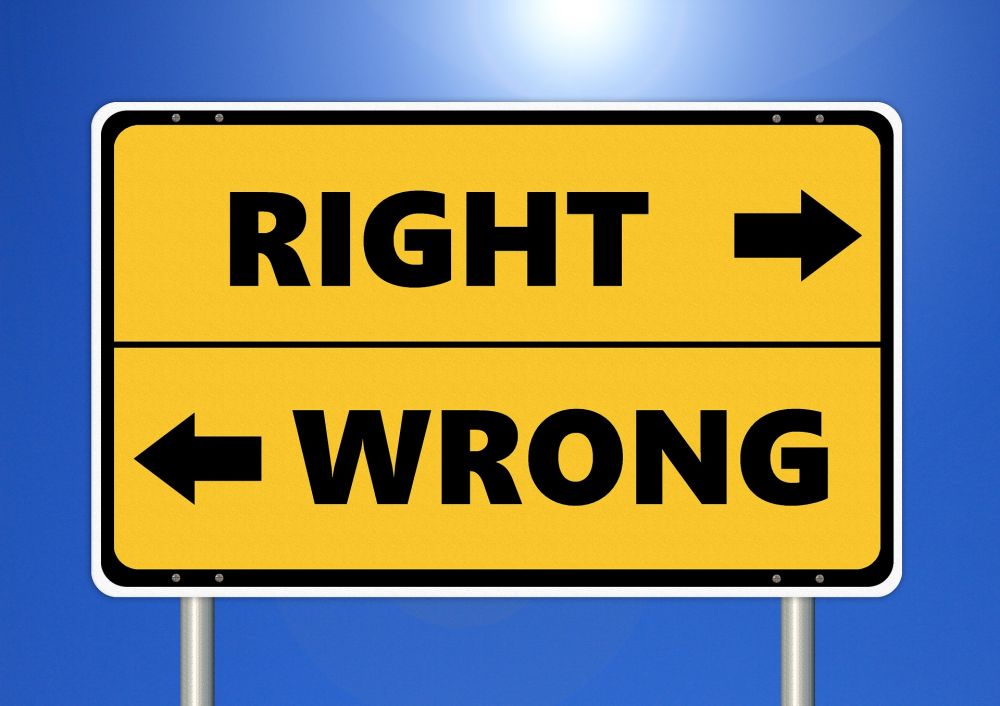Types of Business
There is a huge diversity in the nature and size of businesses; a number of different types of business exist. The legal frameworks of these business types specify things like the ownership of a business, aspects of its operation, who is liable for debts and how it is to be taxed. Some of the important types of business are described in the table below:
| type | description |
| Sole trader | Owned and operated by a single person. This type of business is legally inseparable from its owner. Therefore the owner is fully liable for the debts of the business. |
| Partnership | A number of people (“partners”) share responsibility for the business. Each pays their share of tax on the profits of the company, and each is liable for their share of any debts. In a Limited Liability Partnership (LLP) partners are not personally liable for any debts the company is unable to pay. |
| Cooperative | This is an organization owned and controlled by the people who use the products or services provided by the business. Cooperatives are run for the benefit of members rather than investors. |
| Franchise | This is an arrangement where a company (the “franchiser”) licenses the rights sell certain products or services to an individual or another company (the “franchisee”). The franchisee usually pays a one-off fee and a certain percentage of sales revenues to the franchiser, and in return is provided with established products/services to sell and various forms of business support. |
| Private limited company | Owned by a limited number of shareholders. Shareholders have limited liability, and are not personally liable for the company’s debts. If a shareholder wants to sell their shares, they first have to offer them to other company shareholders. Shares cannot be sold on the open market through a stock exchange. Many SMEs (small to medium sized enterprises, with 50 to 250 employees) operate as this type of company. |
| Public limited company | Owned by shareholders. Shares can be bought or sold by anybody through a stock exchange. Public companies are strictly regulated, and must publish complete and accurate business accounts so that potential investors can assess their true financial position before they buy shares. |
| Multinational corporation | This is a large organisation with a headquarters in one country and subsidiary companies based in a number of different parts of the world. |
Sole Trader: Case Study
In 2016 when John McLean from Achiltibuie lost his job as an engineer on a North Sea oil rig he was paid some redundancy money. However, rather than use the money to pay off the mortgage on his house, John decided to start up his own company called Lairigian Bike Adventures. The company operates from his family home and offers guided mountain bike tours in the highlands and islands. When he’s busy he employs his daughter Sophie (who is a student) to lead some of the tours. Ian handles all bookings, tour arrangements and other administration by himself. As an engineer, he also maintains the bikes.
The redundancy money paid for eight mountain bikes, a trailer, a variety of accessories, helmets and riding gear. It was also used as the deposit on a nearly new minibus because John wanted to present a professional image to clients. In addition, there were various start-up costs such as a large shed for the bikes, insurance and setting up a website for marketing and booking purposes.
Activity 1
John operates as a sole trader. Critically analyse and evaluate this type of business in the context of Lairigian Bike Adventures. What are the benefits to operating as a sole trader? What are the drawbacks and risks?
Setting up the business of Lairigian Bike Adventures as a sole trader has several important benefits, including:
- The owner of the business has total control over it. He/she can decide what to do, how to do it, what to charge clients, where to purchase goods and services and so on.
- Since no consultation is required, decisions can be made quickly. This should help John provide his customers with good service.
- All the profits of the business belong to the owner. In other types of business profits are shared.
- A sole trader can develop very close relationships with clients. John may well have local knowledge or experience which is likely to appeal to his customers. If his clients like him personally they are likely to post positive reviews on sites like TripAdvisor. He may also have local connections with suppliers (for example, to provide clients with accommodation or meals) that might benefit his customers.
On the other hand, there are also several drawbacks to operating as a sole trader:
- Sole traders have unlimited liability. This means that John would be personally responsible for the business’s debts, and could potentially lose his house, savings or any other assets should the business get into serious trouble.
- Lairigian Bikes is entirely dependent on John. He is a “single point of failure”. If he becomes ill, or for any other reason can’t work, it will be very difficult for the business to meet its commitments to clients. John has a mortgage to pay, and any interruption to his earnings may have serious consequences.
- Other than his daughter Sophie, John is the only person working in the business. This means he has to do everything from leading tours, to handling bookings, bike maintenance and book-keeping. One person may not have all the necessary skills.
- It may be difficult to raise finance for short term needs of for expansion.
Overall, operating this business as a sole trader seems most appropriate. Other possibilities may be a partnership, cooperative or private limited company. John happens to have the finance necessary to start the business without having to borrow money, so input from others is not required. John is likely to be an experienced and enthusiastic mountain biker (otherwise, why start a business in this area?), which will help him provide a good customer experience, essential for any new, small business. If the business fails the consequences for John should not be too serious, especially if finances are managed prudently. For example, leaving as much of the profit as possible in the business accounts, at least initially, will help to cover short-term problems such as cancelled bookings on unexpected bike repairs.
Personal liability should not be a serious issue in this case. Possible major costs (such as being sued by a client after an accident) would be covered by insurance, and other liabilities (for example customers’ deposits that may have to be refunded or employees’ wages) are relatively small.
Sole traders can employ other people. As well as leading some tours, Sophie way well have other skills that would benefit the business. John could also pay others for functions such as marketing and accounts where he may not have the necessary skills.
If the business is successful and significant expansion is a possibility it may well eventually be worth considering setting up a partnership. This would be dependent on finding the right person(s), but may allow Lairising Bikes to offer tours in new geographical areas, or a different type of experience (for example walking or kayaking). As well as generating new business, a partnership would help to reduce risk and may bring benefits due to economies of scale.
Activity 2
Activity 2
For each of the business types in the table on the introductory page of this resource (titled 'Types of Business' ) except sole trader:
- Give a brief description of each business type and a typical example.
- Discuss the advantages and disadvantages of this way of owning and operating a business.
Links
You may find the following links useful:
| Business type | Description | Advantages | Disadvantages | Example |
| Partnership | Two or more people come together as partners in a business. |
|
|
Engineering design consultancy |
| Cooperative | Member-owned and democratically run business intended to meet the needs of members. |
|
|
Small company purchased by employees, for example engineering machineshop. |
| Franchise | Business that sells an established product or service in agreement with franchise company. |
|
|
Car windscreen repair business using technology developed by franchise company. |
| Private limited company | Owned by a number of shareholders. Shares not available on open market. | SME (Small to Medium sized Enterprise), for example manufacturer of specialist offshore equipment. | ||
| Public limited company | Owned by many shareholders. Shares available on open market. | Large company with operations at many different places. Range of products/services. | ||
| Multinational corporation | Very large company with operations in several different countries. | Can be based in a country with low costs such as labour and taxes while operating in many other countries. | At risk to political change. | Examples include car manufacturers, oil companies. |
Organisational Structures
People working in a business need to know what the lines of communication and responsibility are within the organisation. Many businesses use an organisational chart to show this information. For example, here is the organisational chart for Caledonian Contracts Ltd:
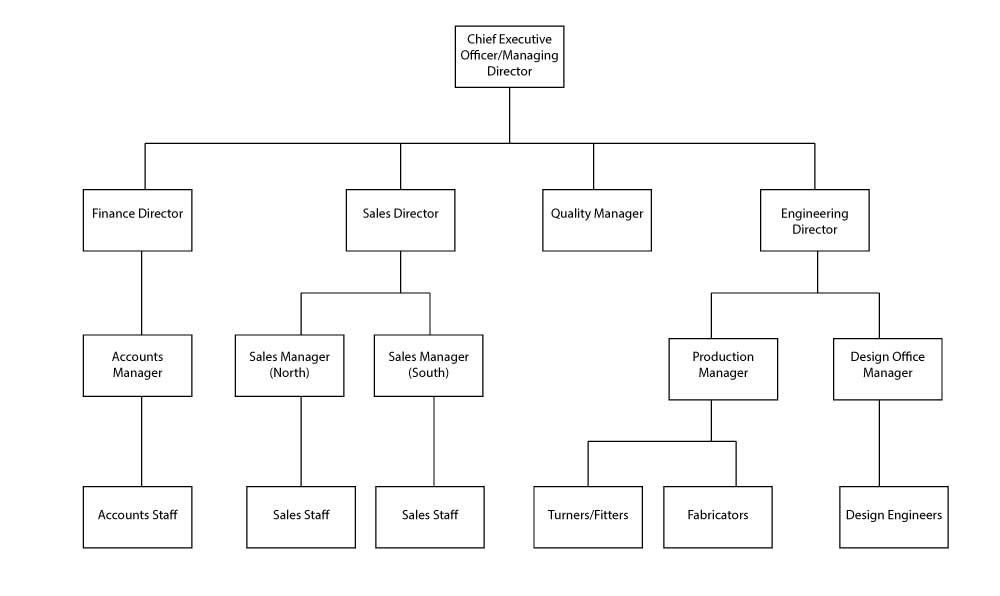
In this type of diagram we can see:
- Job titles, which give us some idea of the roles of people within the organisation
- Lines of authority and responsibility
- Hierarchal levels within the organisation, for example senior management, middle management and junior management.
It doesn’t show cross-functional relationships or informal links between people.
The organisational chart shown above is an example of a functional structure, also known as a hierarchal structure. The lines of formal communication are all vertical, that is between different levels within the organisation, rather than between people at the same management level. An organisation with few hierarchal levels (usually by having few tiers of management) is said to have a flat structure.
Matrix Structure
Another possible arrangement is the matrix structure. Here is an example:

In this example the Managing Director is the only person with responsibility across the whole business. All other staff work within one project only. However, in most companies with a matrix type organisation there are several people with company-wide roles. For example, a Human Resources Director might be responsible for HR policies for the whole organisation, while an HR manager will recruit people to work on their project only.
The dotted lines imply that there is communication between people with similar roles in different projects. This allows collaboration and the sharing of ideas across the company.
Activity 3
Activity 3
Here are some statements that are possible advantages and disadvantages of a particular organisational structure.
- Lines of responsibility and control are clear
- Encourages specialised management expertise
- Slow response to customer needs
- Possible duplication of effort
- Promotes teamwork
- Encourages competition between teams
- Lack of consistency in company’s products and services
- Clear path for promotion within the organisation
- Focuses on end product
- Narrow perspective and limited innovation
- Good vertical communication
- Good horizontal communication
- Efficient use of specialised resources
- Management control may be distant from core activities of organisation
- Lines of responsibility could be confused
- Provides challenges and encourages innovation
- More responsive to customer needs
Download the template, and place them in the table under hierarchical structure or matrix structure, as appropriate.
| Functional organisational structure | Matrix organisational structure | ||
| advantage | disadvantage | advantage | disadvantage |
| Lines of responsibility and control are clear | Slow response to customer needs | Promotes teamwork | Possible duplication of effort |
| Encourages specialised management expertise | Narrow perspective and limited innovation | Encourages competition between teams | Lack of consistency in company’s products and services |
| Clear path for promotion within the organisation | Management control may be distant from core activities of organisation | Focuses on end product | Lines of responsibility could be confused |
| Good vertical communication | Good horizontal communication | ||
| Efficient use of specialised resources | Provides challenges and encourages innovation | ||
| More responsive to customer needs | |||
Money and Business: The Basics
All businesses exist to make money. They aim to earn more than they spend in as little time as possible. In appraising a possible new investment, from buying a new machine or employing a new person to developing a new product or opening a new factory, a business has to ask some questions:
- How much will this cost?
- What are the benefits (financial and otherwise)?
- How long will it take to recover the investment?
- What are the risks?
- Is there a better alternative?
Costs and benefits can be classified as capital or revenue:
- Capital spending is for major items often intended to expand a company’s business. It is used to purchase assets such as buildings or major items of equipment. These items generate income for the business over an extended period, usually several years. Over that period, the value of the asset may fall. This is called depreciation. At some point in the future an asset may be sold. In that way some or all of the cost of capital spending may be recovered, or a profit may even be made.
- Revenue is the money that flows into and out of a business on a daily basis. Revenue expenditures include operational costs such as salaries, utility bills, administration costs and insurance. Money spent on maintenance and repair of machinery and equipment is also regarded as revenue expenditure.
The distinction between capital and revenue expenditure is important from a taxation point of view.
An engineering company may have several projects all running at the same time. Each project will have direct costs, such as the labour and materials specifically used on that project. In addition, it is normal practice for a project to be allocated a fair share of the indirect costs faced by the company. Typically, these are overheads such as office rent, facilities management, marketing and accounting.
Expenditure
Expenditures can further be classified as fixed costs or variable costs:
- A fixed cost does not vary with output. For example, the cost of employing a project manager will have to be met even if the project produces nothing. The same applies to rent paid for a workshop or the insurance paid for a fleet of vehicles.
- A variable cost depends on output. For example, the more cars made by Ford, the more sheet steel the company will need to buy. Often variable costs increase at a constant rate with output. Work sub-contracted to another company is likely to be a variable cost.
Some labour costs are fixed, others are variable. Staff employed on long-term contracts are a fixed cost, while hourly paid staff are a variable cost. Some costs have both fixed and variable elements. For example, an engineering works with machine tools will have to be kept light and warm regardless of the output, so there will be some electricity costs. However, the more the machinery is used the greater the electricity bill.
Businesses generate income by selling their products and services. In general, total income increases at a constant rate with sales.
Profit is the difference between total income and total costs:
P = nS - (F + nV)
where:
- P = profit
- n = number of items sold
- S = selling price per item
- F = fixed costs
- V = variable costs per item
A company makes a loss when its income is less than its total costs. This will show up as a negative profit. The breakeven point is the number of sales for which the total income is equal to the total costs.
Example
A company manufactures a product which it sells for £65 per item. In one particular month it sells 200 items. What is the profit (or loss) if the fixed costs for the month are £4500 and the variable costs are £38 per item?
- P = nS - (F + nV)
- P = (200 x 65) - {4500 + (200 x 48)}
- P = (200 x 65) - {4500 + (200 x 38)}
- P = £900
Activity 4
Activity 4: Quiz
You should now test your knowledge so far by taking this quiz on Socrative
If you have difficulty logging in to complete the quiz online then you can access a PDF of the quiz here: Socrative Test 4: Business and Money: the basics
Quality
Some businesses have a reputation for “high quality” and are able to charge a premium for their products and services. In this sense quality is a very subjective term. However, in recent decades businesses have seen the need for a much more objective approach to quality.
It is still based on a customer’s perception of products are services, but quality is now based on “fitness for purpose” and may be defined as: “the ability to continually meet the agreed needs of the customer”.
Case Study
SQS Offshore Ltd supply goods and services to the commercial diving sector. They have customers worldwide, many of which are diving companies that work in the oil and gas sector. One of the products sold by SQS is a diver’s hot water suit. It is manufactured by East Coast Diving Equipment Ltd who have been in the business for many years and supply several products to SQS. The suits are made from neoprene and have pipes which carry hot water to the diver’s body, arms and legs. The pipes are made from rubber and are manually glued into place inside the suit.
Every month SQS sells about 25 hot water suits, but recently there have been several complaints from purchasers about faulty suits. Divers have become very cold and have had to stop work and be raised from the sea-bed to the support vessel. It appears that in the defective suits one or more of the rubber pipes has been blocked when excessive glue was applied during manufacture.
Discuss
Discuss the actions SQS Offshore should take to deal with this problem.
- This is an example of a situation where a product that is not fit for purpose can result in costs that are many times its initial purchase price. The customer is likely to be very unhappy!
- In this situation there are serious health and safety concerns, and the first thing that needs to be done is contact all purchasers of the product to inform them of the issue. Suits may have to be removed from service, inspected, tested, returned, replaced or disposed of. Hopefully, SQS records system will allow them to quickly and accurately trace all suits that may be faulty and inform the customers promptly.
- If SQS has a system for inspecting the suits before despatching them to customers, it is clearly not working. In this situation it should be straightforward to devise a simple test to see if water is flowing properly through a suit. Who is responsible for this? What do they do? What are the acceptance criteria? How is this recorded? Can individual suits be identified? How are these tests monitored? All suits currently in stock need to be tested, as do new ones supplied by East Coast Divers.
- East Coast Divers need to be informed. SQS should expect full cooperation and a prompt, thorough investigation into the problem. It may be that SQS finds that a new worker in their factory has been to blame for over-zealously gluing the pipes in place and causing blockages. Or perhaps a new type of glue has been used and it takes longer to set. After additional training and supervision for the worker (or reverting to the original type of glue), East Coast Divers are confident the problem will not recur. However, it may be wise for SQS to visit their factory and verify for themselves that the issue has been adequately addressed. It is not enough to blame one worker or process for a problem – the company should have had a system in place that ensures any defect is detected and dealt with before the product is shipped to the customer. SQS should discuss their quality system with East Coast Divers, not least because SQS buys several products from them. How can they have confidence that everything East Coast Divers supplies is fit for purpose?
- Similarly, SQS also need to look at its own quality system. It is not enough to rely on its suppliers. How does it ensure the things it buys from any supplier are fit for purpose when received, do not deteriorate in storage and meet the customer’s requirements when finally delivered? In this case it will probably be necessary for all hot water suits to be inspected and tested when received from East Coast Divers. Over time, with evidence that the issue has been properly addressed it may be possible to reduce this level of checks.
- Many companies prefer to buy products and services from suppliers with a quality system that has been certified to a recognised standard such as ISO 9000.
The case study above is intended to show that there’s a lot more to meeting a customer’s requirements than checking individual products are fit for purpose (Quality Control, QC). A company needs a quality system which sets out the processes and activities that are necessary for the company to have confidence that its products and services meet customers’ requirements (Quality Assurance, QA). Even wider than this, ideally the whole organisation is focussed on meeting customers’ requirements (Total Quality Management, TQM).
Links
The International Organisation for Standardization (ISO) has produced a family of standards called ISO 9000. You can read about this here:
These standards are intended to help companies document and implement an efficient quality system. They are based on seven quality management principles, which you can read about here:
Activity 5
Activity 5
Discuss quality control, quality assurance and total quality management in the context of an engineering company. The company has 500 employees and their business is the installation and maintenance of offshore wind turbines.
Quality Control (QC): inspections and tests carried out to verify a product’s compliance with specifications. It may involve:
- Visual inspection
- Other inspection techniques, for example MPI (magnetic particle inspection) and dye penetrant tests
- Functional tests
- Non-destructive tests
- Sampling
QC techniques will be used during the manufacture of the various components in a wind turbine system. Although this company is only involved in installation and maintenance, QC will still be required. For example, to measure the output of a wind turbine under a variety of different conditions to check that it meets specifications.
Quality Assurance (QA): documented system that generates the evidence required to give the company, its customers and other stakeholders’ confidence that its products and services continually meet requirements. It encompasses QC but reaches into all parts of a business that have an impact on customer satisfaction. Many companies carry out internal audits to assess compliance with quality system policy and procedures. Continuous quality improvement is another function of a QA system. This may be done by analysing QC data and looking for improvements in the way the company works.
The company may decide that it is beneficial to have its quality system certified to a recognised international standard. In some cases the owners or operators of an offshore wind farm might require that a maintenance company is certified to ISO 9001.
Total Quality Management (TQM): management system that focuses all employees on continual improvement of company processes and practices. The aim is to deliver long-term success for the company by making the business more efficient and improving customer satisfaction.
The drive for TQM was started in the late 1940s by Dr. W. Edwards Deming, who was an American engineer, statistician and management consultant. He worked with large companies in Japan helping to rebuild industry after the 2nd world war. His idea was that by improving quality, a business can reduce its costs and at the same time increase productivity and market share.
In this context any quality problems could well have serious consequences, for example faulty installation of an offshore wind turbine could be very expensive to fix, even if it is discovered before the system is connected to the grid. The company is quite large with 500 employees, many of whom will be skilled engineers carrying out complex tasks in a very difficult environment. A good quality system will ensure that the correct procedures for these tasks are followed at all times, and total quality management will look for ways to improve these procedures to improve the efficiency of the work.
Activity 6
Activity 6
Read about his 14 point management philosophy here:
How do you think Deming’s philosophy changed industry? Seventy years later, are Deming’s ideas still relevant?
This needs to be considered in an historical context. When Deming started working in Japan “quality” meant craftsmanship. Mass production and assembly lines were relatively new ideas, and consumerism hadn’t really started. War time production reached enormous scales and there was an emphasis on “getting the job done”. Defective products were thought to be inevitable because of manufacturing tolerances. Inefficient business practices persisted because of the lack of competition and consumers had to accept what they were given. The British car and motorcycle industries are good examples of this.
Reconstructing the devastated infrastructure and economy of Japan meant starting businesses in non-military sectors, taking advantage of modern technology and selling to mass markets. Applying Deming’s philosophy allowed companies not only to produce items that met and exceeded customers’ expectations, but to do so at low prices because of high efficiency. With more people able to afford to buy things, companies were able to expand and the economy thrived. This could not have taken place with the old way of doing things. Manufacturing methods and products improved continuously and rapidly in all sectors, but the electronics industry stands out from all others. It grew from the invention of the transistor in 1947 to the incredibly complex integrated circuits of modern times in a few short decades, changing our lives as it did so. Making a microprocessor for a phone or computer involves so many intricate manufacturing steps it’s hard to imagine how this ever could be achieved if Deming’s ideas hadn’t become so embedded in modern industry.
Sampling
When products are made in their hundreds or thousands it’s usually not practical to inspect or test each one to see whether it meets requirements. In such cases a sample is chosen to represent all production (the “population”) and only items in the sample are checked.
To be efficient and reliable sampling has to be done very carefully and should avoid:
- Bias – the sample does not accurately represent the whole population. For example, if we want to know the mean height of adults in Scotland and our sample for measurement happens to be mainly basketball players then the results are likely to be inaccurate and biased towards a high mean height.
- Dispersion – the sample has greater (or lesser) spread about the mean than the whole population. For example, a factory has 5 machine tools all manufacturing shafts of a specified diameter. One of the machines is old and worn and doesn’t work to the same precision as the newer machines. It might well produce shafts with the same mean diameter as the other machines but its production tolerances are greater. If QC checks sample only this machine’s production (or leave it out entirely) there is likely to be a dispersion error. Mathematically, this can be measured using standard deviation.
- Non-reproducibility – if nothing changes, the results of one sample should be close to the results of other samples intended to measure the same thing.
Sampling techniques make use of statistics. Here are some basics:
Engineering tolerances are necessary because manufacturing conditions can never be entirely consistent over time. Tolerance is the range of values for a measurement or property that are acceptable. For example, a steel shaft may be machined to a diameter of 50.0 0.1 mm, which means that any shaft with a diameter between 49.9 mm and 50.1 mm is acceptable.
Deviation is the difference between a measurement and the mean value (often given the symbol , “meu”). Variance is the sum of the squares of the deviations of all measurements, and the standard deviation is the square root of the variance. The standard deviation (symbol , “sigma”) is often used to quantify the “spread” of measurements around the mean. In manufacturing the lower the standard deviation the better.
If we measure the diameter of 100 steel shafts from the same batch we will probably find that most are close to the mean, with only a few much bigger and a few much smaller. Plotting the results on a graph will often give us a “bell curve”:
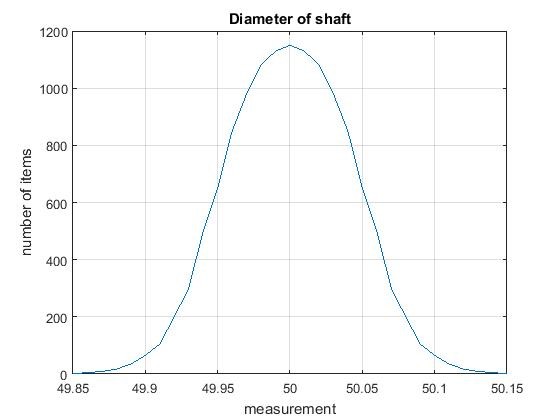
Distribution
This kind of result is called a “Gaussian distribution” or a “normal distribution”. Watch this video on the normal distribution:
In general large samples are better than small samples, but they are more costly to work with. Several factors affect sample size, including:
- Population size
- Confidence level – how confident do you need to be that the results from your sample are a true representation of the population? Typically this might be 95% or 99%.
- Confidence interval – what is the maximum allowable margin of error? Typically this might be ±1% or ±5%.
- Likelihood of a specific event – does experience give an indication of how likely a defect will be to occur?
The sample size from an infinite (or very large) population may be calculated from:

where:
- n = sample size
- Zscore = depends on confidence level (comes from the Normal distribution curve)
- σ = standard deviation (how much variation is expected in the sample)
- E = margin of error (confidence interval)
Activity 7
Activity 7
An electronics factory produces millions of discrete transistors every month. It selects a sample for testing and measures the current gain of each.
- Use a spreadsheet to calculate the minimum sample size required for each condition in the following table:
| Confidence level | Standard deviation, σ | Margin of error, E | |
| (a) | 90% | 0.2 | 5% |
| (b) | 95% | 0.2 | 5% |
| (c) | 99% | 0.2 | 5% |
| (d) | 95% | 0.2 | 1% |
|
(e) |
95% | 0.4 | 1% |
|
(f) |
95% | 0.5 | 1% |
|
(g) |
99% | 0.5 | 1% |
|
(h) |
99% | 0.5 | 2% |
|
(i) |
99% | 0.5 | 5% |
Use the following scores for Z for the confidence levels given:
- 90%: Zscore= 1.645
- 95%: Zscore = 1.96
- 99%: Zscore = 2.576
- What conclusions about sample size can you make from the spreadsheet?
(a) The spreadsheet:
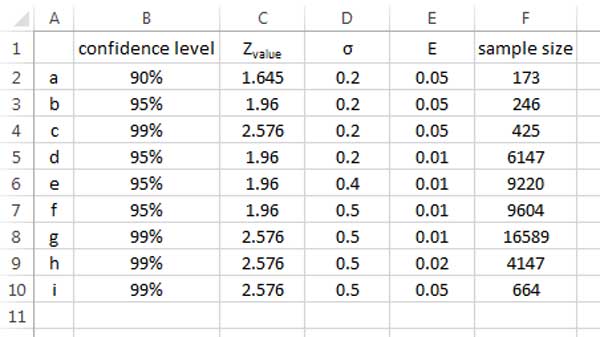
Use this formula to calculate sample size:

In cell F2 to calculate sample size for part (a) the formula used was: C2^2(D2(1 – D2))/E2^2. This was copied into cells F3 to F10 to calculate the other sample sizes.
(b) From the spreadsheet we can see:
- The higher the confidence level required, the greater the sample size needed [parts (a), (b) and (c)].
- The greater the standard deviation, the greater the sample size needed [parts (d), (e) and (f)].
- The greater the margin of error, the smaller the sample size needed [parts (g), (h) and (i)].
Activity 8
Watch
There are several different methods of choosing a sample from a population, some of which are discussed in this video:
Activity 8
Summarise the methods of sampling discussed in the video.
Sampling is when part of a population is selected to represent the entire population. The sample should be unbiased, where each item in the population has an equal chance in being selected for the sample.
Biased sampling techniques include convenience sampling (where items are selected for the sample at the convenience of the person taking the sampling), and voluntary response sampling (where items put themselves forward to be included in the sample). In both these methods the sample is likely to have different characteristics to the population.
Unbiased sampling techniques include:
Simple random sampling – the whole population is treated equally and every item has an equal chance of being included in the sample.
Stratified random sampling – a certain characteristic is used to form the population into groups called strata. A random selection from each stratum is selected to form the sample.
Multistage sampling – this is a combination of two or more stages of simple random sampling. The population is formed into groups, and one group is chosen at random from which to take the sample. This group may be further divided into sub-groups, and a sub-group chosen at random for the sample. This may be continued through a number of stages until the sample is obtained.
If individual items in a population are assigned numbers, a random number table can be used to find a random sample.
(There are other sampling techniques not mentioned in this video such as systematic sampling and cluster sampling.)
Activity 9
Activity 9: Quiz
You should now test your knowledge so far by taking this quiz on Socrative
If you have difficulty logging in to complete the quiz online then you can access a PDF of the quiz here: Socrative Test 5: Quality
Management Techniques
Taguchi method
Dr Genechi Taguchi was an engineer and statistician from Japan who built on Deming’s work to develop ideas on “robust design”. The aim of the Taguchi method is to find low cost ways of improving quality in manufactured products. Briefly, Taguchi’s method:
- Uses statistical techniques to quantify losses due to low quality. The variances in specific parameters are measured and their impact on the function and quality of the product determined. Root causes of any problems are identified. The cost of losses may be stated in monetary terms.
- Applies robust design techniques. Variance is reduced as much as possible at the design and development stage, rather than during production.
- Is not limited to simply using design to reduce manufacturing tolerances. A robust design will looks for ways to remove the impact of a specific variance on the function and quality of a product. For example an electronic circuit might be designed so that variance in transistor current gain does not affect the performance of the circuit. Also, robust design considers losses due to detrimental effects such as material waste and energy consumption.
- Doesn’t consider all products that are within specifications to have equal quality (“goalpost approach”). It strives to find ways of getting closer and closer to perfection.
- Depends on a management culture committed to TQM.
The Taguchi method has been a key factor in the success of companies such as Toyota, Ford, Xerox and Boeing.
Six Sigma
Six sigma is an approach used by businesses to drive enhancements in quality. Its literal meaning is to aim for no more than 34 defects in 10 million, which is the number of items outside standard deviations from the mean in a normal distribution.
Here is a graph of a normal distribution of 1:

If a company was to achieve six sigma the probability that any of its products is defective is given by the total area under the graph to the left of -6 and to the right of +6.
Watch
Have a look at this:
Activity 10
Activity 10
A company that manufactures business jets is losing market share to competitors. In response, the directors of the company are considering adopting a Six Sigma approach. Describe what this is and how it might help the company.
Six Sigma is an approach to quality that aims for near perfection. It is a disciplined, data-driven set of methodologies intended to eliminate defects arising in any process. To achieve Six Sigma, a process must not produce more than 3.4 defects per million opportunities.
For the company to be considering Six Sigma, there must be a perception that quality problems are contributing to losses in sales and thereby falling market share. Perhaps customers have complained about specific quality issues, or the company is aware of costs that arise due to poor quality such as replacing or re-working components that are outside specifications. Other reasons for falling market share (for example, obsolescence in the company’s products or a particularly effective marketing campaign from a competitor) may not be overcome by Six Sigma.
In applying Six Sigma, the company will need to break down its whole manufacturing and assembly operation into individual processes and sub-processes. It will need to measure and gather data on the quality of each of these, and carry out analysis to see exactly where, how, why and to what extent defects occur. Also, the effects of defects in one process on subsequent processes should be considered. The analysis should identify weaknesses in the company’s operations and it will probably be possible for improvements in many processes to be made. For example, the manufacture of a particular component might require several complex operations to be carried by skilled machinists with a resulting high defect rate. Perhaps an equivalent component can be made cost-effectively and with a much lower defect rate by a 3D printer. Business jets include systems such as engines, hydraulics, navigation equipment and computers that are manufactured by specialist companies, so the Six Sigma approach may also identify quality issues in products bought in by the company. Once all the changes have been made, operations will need to be analysed in detail again to assess the impact on quality. Further improvements will be sought and the cycle repeated.
Six Sigma is iterative and continuous in striving for near perfection. In this case whether or not the application of Six Sigma will lead to improved sales and reduced costs in time to address falling market share is difficult to say. However, the company may wish to apply Six Sigma techniques to the assembly line of a new product, addressing issues of obsolescence at the same time as quality. It may also wish to consider the Taguchi method of robust design to reduce manufacturing costs.
Entrepreneurship
An entrepreneur is someone who sees a gap in the market and starts a business to fill the gap.
Watch
Here’s a short video on entrepreneurship by Bill Aulet from Massachusetts Institute of Technology:
- https://ocw.mit.edu/courses/sloan-school-of-management/15-390-new-enterprises-spring-2013/video-tutorials/lecture-1/
His video on innovation is also very interesting:
Links
Here is a link to an article in Business News Daily on entrepreneurship:
Activity 11
Activity 11
Find out about two or three entrepreneurs. Here are a few well-known names, but you might have some other ideas:
- Andrew Carnegie
- Jim McColl
- Annita Roddick
- Duncan Bannatyne
- Richard Branson
- Bill Gates
- Elon Musk
- Steve Wozniak
- Cher Wang
Briefly describe what you think led to their success as entrepreneurs.
Note discussion points for class
Business Plans
A business plan is a document drawn up to help a business set out how it will achieve its goals. It basically answers three questions:
- Where are we now?
- Where do we want to be in 5 years’ time? (for example)
- How will we get there?
Business plans are made when a new business is started or purchased, and as part of an on-going review. For everything from a small start-up business to a well-established company looking to expand, a credible business plan is an important part of attracting investors. However, a business plan should be much more than just a means of convincing a bank to lend money, and a well-written one can help a business track its progress towards its objectives.
Business plans very widely according to context. Here are some topics that are likely to be included in any business plan:
- Current situation
- Identity, type and ownership of business
- Nature of the business: products and services; industry and competitors; market and customers
- Key people and their skill: managers; workforce; gaps in skills and experience; recruitment
- Location: premises; equipment
- Future direction
- Strategic influences: strengths and weaknesses; opportunities and threats
- Strategic direction: aims and objectives; polices; activities
- Implementation of aims
- Management of resources: operations; people
- Marketing plan: competitive edge (USP, “unique selling point”); research; marketing methods
- Financial analysis: funding requirements (start-up capital, working capital, assets, risk and reward, timing of funds, security); profit and loss; cash flow; balance sheet; assumptions and risks.
Business plans often have the same format as other reports. They start with an executive summary, present evidence and analysis, and detailed information is included in appendices.
Activity 12
Activity 12
Look back at the case study in Activity 1. Suppose John McLean decided to start his business Lairigian Bike Adventures using funds borrowed from his bank. Create a draft business plan to help him apply to the bank for funds. (It’s only necessary to list the content of the plan. Don’t bother with numbers or other details.)
View the detailed draft business plan: Lairigian Bike Adventures
Legal Requirements
For the protection of society as a whole, like individual people, all businesses must obey the law. To some extent, the exact legal framework for a business depends on the type of business and what it does, but there are some universal requirements:
- Legal structure of the business: sole trader, limited company etc.
- Trading laws: Trades Descriptions Act, Sale of Goods Act; trademarks, copyrights, patents.
- Licence: some businesses need a licence to operate, particularly if there are health and safety concerns. For example, MROs (Maintenance, Repair and Overhaul companies) that maintain civil aircraft.
- Health and Safety: Health and Safety at Work etc Act 1974; COSHH (Control of Substances Hazardous to Health).
- Tax: VAT (Value Added Tax); Corporation Tax; employee taxes - Income Tax, National Insurance.
- Insurance: employer’s liability; public liability/professional indemnity; general business insurance.
Links
Have a look at the following websites:
Activity 13
Activity 13
CF Aerostructures Limited manufactures composite parts for the commercial aircraft industry. Their premises are a building with offices and a factory, and they have 200 employees.
Summarise the legal obligations on CF Aerostructures. How would the company ensure these legal obligations are met? Who is responsible?
The major legal obligations for CF Aerostructures include:
- As a PLC, the business must be registered with Companies House and obtain a trading certificate. A suitably qualified Company Secretary must be appointed and company accounts published in the prescribed manner. The directors of the company are responsible for this.
- Several trading laws apply to the manufacture and sale of products. CF does not advertise and sell its products on the open market so the Trades Descriptions Act will not be relevant. CF’s products are probably made to the aircraft manufacturer’s design (in order they fit the rest of the aircraft), so trademarks, copyrights and patents will not be an issue. The Sale of Goods Act is intended to ensure anything bought and sold is of reasonable quality and fit for purpose. Customers will have clear product specifications which CF’s quality system will aim to ensure are met. It seems unlikely that the Sale of Goods Act would ever need to be applied because it would be in CF’s and their customer’s interests to resolve any dispute before that stage. All of CF’s employees in manufacturing have a responsibility for quality, and a Quality Manager may be employed to oversee the system. The Quality manager will report to a senior manager or director who will have ultimate responsibility.
- CF may have been given a licence to manufacture products to the design of the customer. This licence will have legal obligations to protect the product’s design. Company directors will be responsible for ensuring the conditions of the licence are met.
- All manufacturers have to comply with health and safety laws. This is for the protection of employees, visitors and other people affected by the business. The Health and Safety at Work etc Act 1974 is a wide-ranging law that applies to all company activities, not just manufacture. COSHH (Control of Substances Hazardous to Health) regulations apply in situations where dangerous chemicals are handled and stored. As a manufacturer of products made from composite materials, CF will use resins, adhesives, paints, cleaning materials and other hazardous substances, and COSHH regulations will certainly apply. All employees have responsibility for their own and others’ health and safety, and may be prosecuted for breaking the law. Managers and directors have responsibility at different levels for health and safety.
- All companies are legally required to pay appropriate taxes, including VAT (Value Added Tax) and Corporation Tax. They also collect employee taxes such as Income Tax and National Insurance from the company payroll. A senior manager such as the Finance Director is responsible for this on a day-to-day basis. The Company Secretary has ultimate responsibility to ensure the company complies with the financial legal requirements.
- All companies require appropriate insurance: employer’s liability; public liability/professional indemnity; general business insurance. In CF’s case, an employee injured in an accident at work might make a claim against the company. If upheld, it may be met by CF’s employer’s liability insurance. Similarly, damage to the environment caused by incorrect disposal of chemicals may result in a claim from the local council for repairs. This may be covered by CF’s public liability insurance. Any motor vehicles owned by CF will need to be insured. Company directors are responsible for ensuring appropriate insurance policies are held.
Ethics and Engineering
Stated simply, ethics are the moral principles that guide a person’s conduct and behaviour. Ethics are personal and subjective, but most societies operate within a set of collective ethical values. To a large extent, a society’s legal system reflects its ethics, but an engineer may sometimes face a decision with an ethical dimension but where there are no legal issues.
The Engineering Council is the regulatory body for engineering in the UK. It works with professional institutions such as the Institution of Engineering and Technology (IET), the Institution of Civil Engineers (ICE), the Institution of Mechanical Engineers (IMechE), the Royal Aeronautical Society (RAeS) and many others on the registration of engineers and technicians.
An engineer registered with a professional body is expected to work within a set of strict rules called a Code of Conduct, or Rules of Conduct. Each professional body has its own code of conduct but the aim is always to ensure the work of a professional engineer is always in the public interest, not just for the benefit of the employee or employer. The public interest includes things like safety and damage to the environment.
Links
Here is what the Engineering Council says about professional ethics:
Activity 14
Activity 14
Read the following article on a recent controversy where engineers were involved:
Look for other sources of information on this topic if you like.
Answer the following questions:
- What was the scandal all about?
- How were engineers involved in this scandal?
- Comment on the conduct of the VW engineers. Why did they behave this way?
- Do you think this is an isolated incident?
Note points for discussion in class
Activity 15
Activity 15
- What is meant by sustainability and why is it an important issue?
- The airliners that fly us on holiday or business trips use a great deal of petroleum based fuel. How are companies such as Boeing and Airbus trying to make commercial aviation sustainable?
- Here’s a website which explains the meaning of sustainability: Sustainability
- As in other industries, there is increasing regulatory and commercial pressure on aviation to work towards sustainability. Aircraft manufacturers and other companies involved in commercial aviation are trying to find ways to respond to increasing demand for flights and at the same time reduce the impact on the environment. This means trying to reduce the amount of fuel burnt per passenger kilometre, thereby using a rapidly depleting resource more efficiently and also reducing harmful emissions of carbon dioxide and other products of combustion of fossil fuels. Another focus for sustainability in aviation is the reduction of aircraft noise. Here is a website from an organisation called Sustainable Aviation: Sustainable Aviation
This organisation has produced a “roadmap” for the reduction of CO2 emissions by aircraft. It shows how emissions in 2050 can be close to levels in 2005, even with aviation growing by a factor of about 2.5. This is quite a long document but it is worth reading the Executive Summary in pages 3 to 5. Reductions in CO2 emissions will be achieved from:
- Improvements in aircraft operations and ATM (Air Traffic Management). For example, the use of Continuous Descent Approach (where engines are at low thrust settings) rather than a stepped approach can save a lot of fuel. So can better flight planning, less time spent on the ground with engines running etc.
- The use of imminent aircraft. This means aircraft with the latest fuel-efficient technology replacing older types. Examples include the Airbus A320NEO, the Boeing 737MAX and the Bombardier CS100. This is using proven technology to make significant gains, and will happen more quickly if fuel prices rise because there will be more incentive for airlines to buy fuel efficient aircraft.
- The development and introduction of future aircraft. There is lots of research currently being carried out on entirely new aircraft designs and it is hoped that much more fuel efficient and quieter aircraft will be possible in the future. New engine technologies, Blended Wing Body aircraft, electric powered aircraft, hydrogen powered aircraft and several other technologies are all promising, but this will take a great deal of investment and many years for any of these ideas to have a significant effect on emissions.
- Non-fossil fuels such as various types of bio-fuel and even hydrogen have the potential to reduce aircraft emissions. The use of bio-fuels to power aircraft has been demonstrated many times, but to have a significant effect biofuels will need to be available from sources on a large scale that do not affect food production, and which can be manufactured and distributed cost-effectively. The amount of energy available per cubic meter in hydrogen is so low that aircraft fuelled by it will require drastic changes in design.
In addition to this, Sustainable Aviation mentions Market Based Measures (MBM) to reduce emissions. An example of this is an emissions trading scheme. For example, an airline with modern fuel efficient aircraft will be able to sell the right to produce emissions to a competitor with older aircraft, thus providing an addition commercial advantage to operating with low emissions.
Activity 16
Activity 16: Quiz
You should now test your knowledge so far by taking this quiz on Socrative
If you have difficulty logging in to complete the quiz online then you can access a PDF of the quiz here: Socrative Test 6: Entrepreneurship, the Law and Ethics.
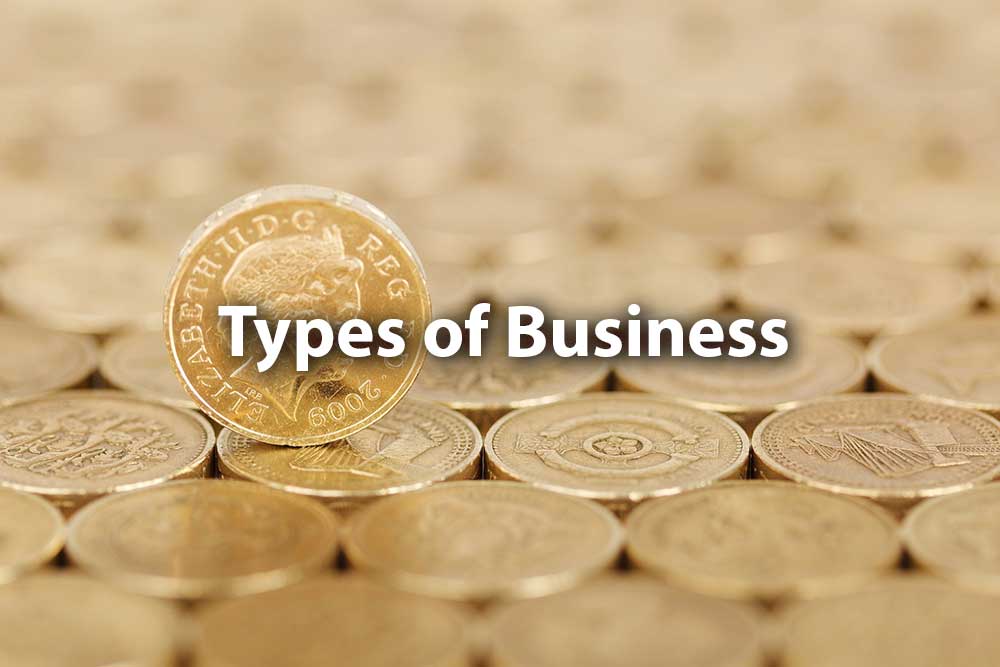


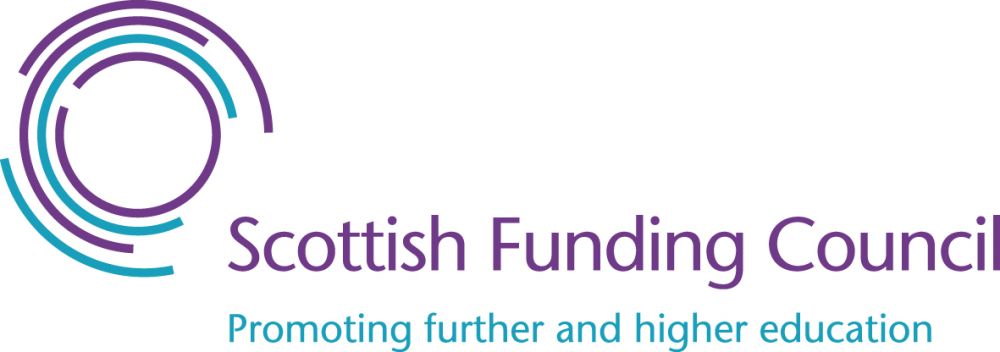

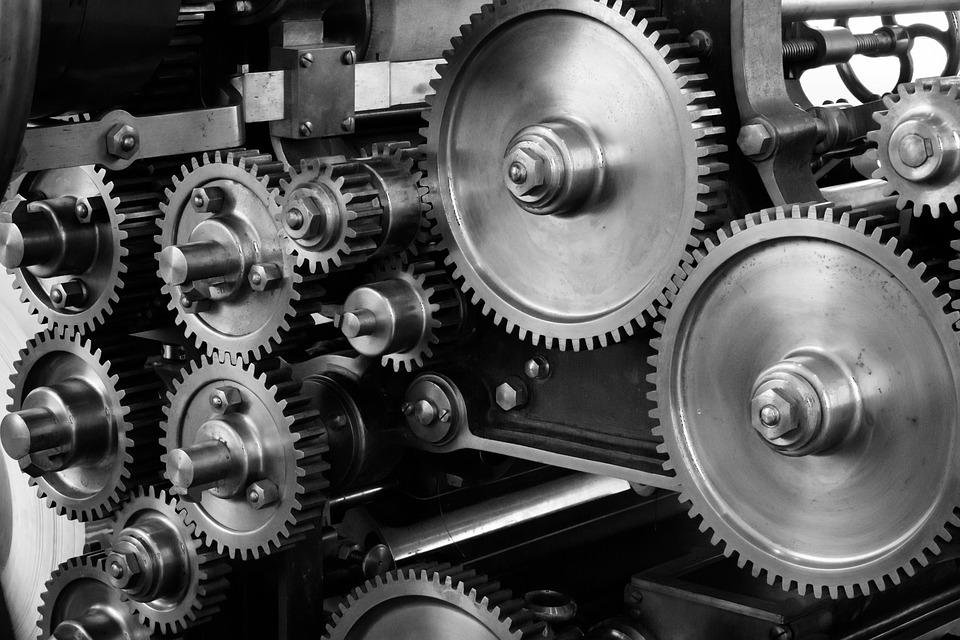
.jpg?1532357469540)

